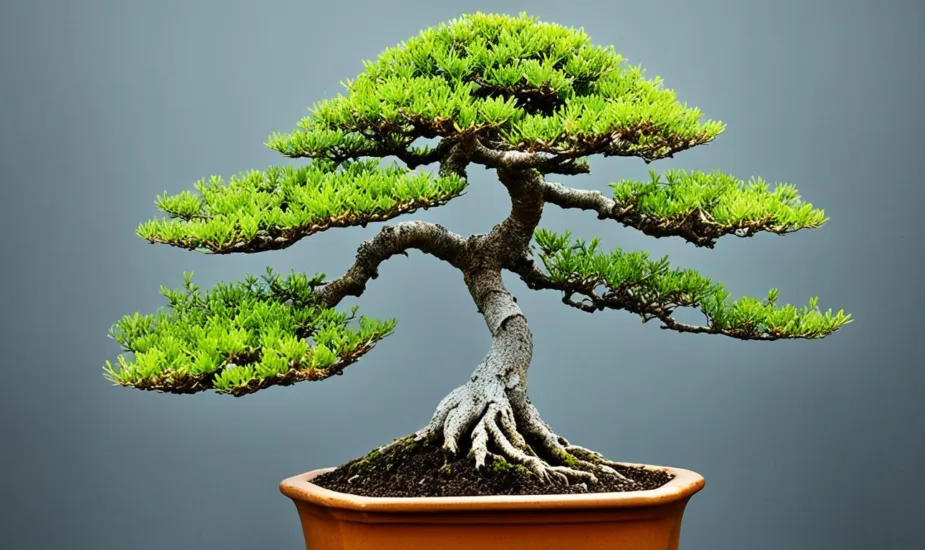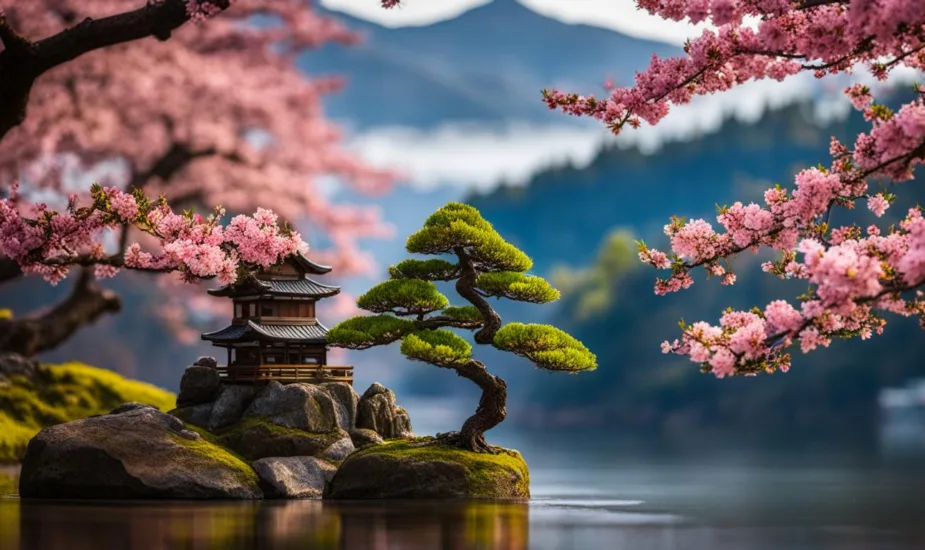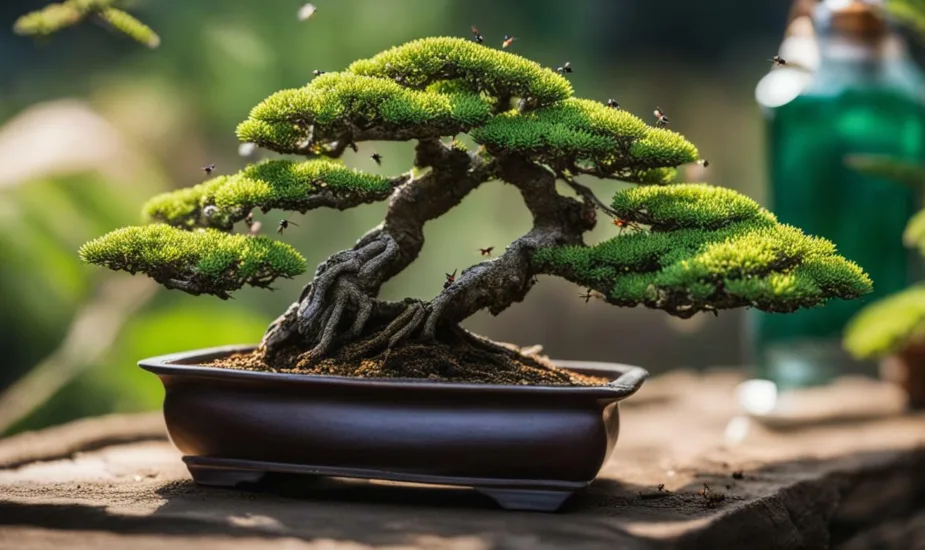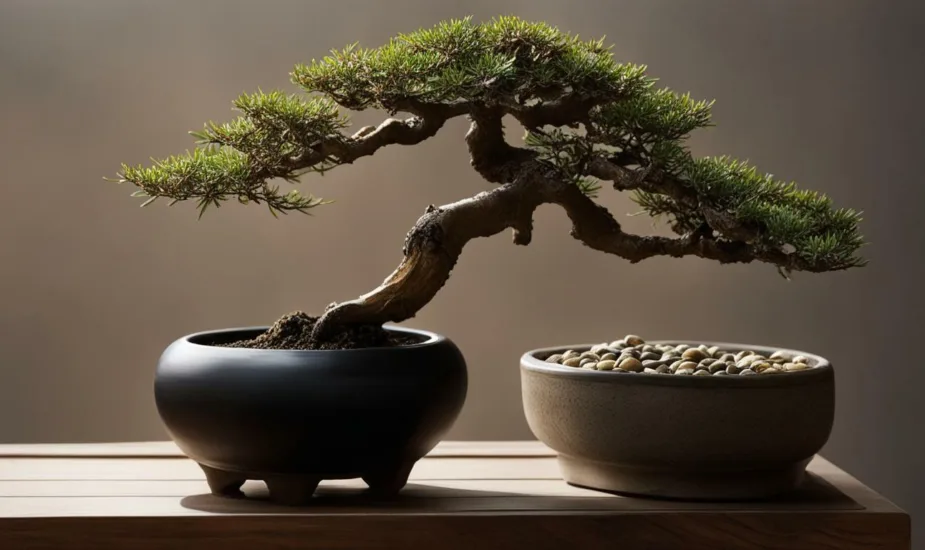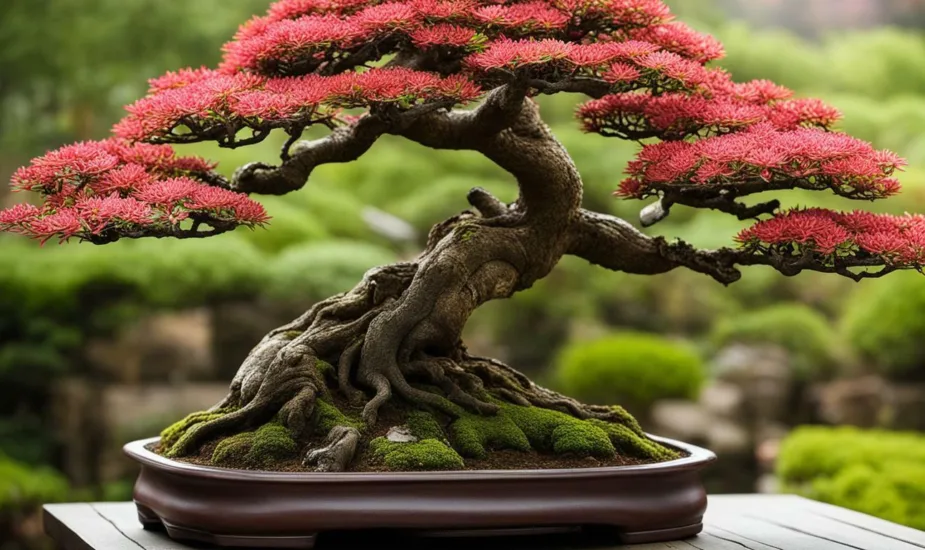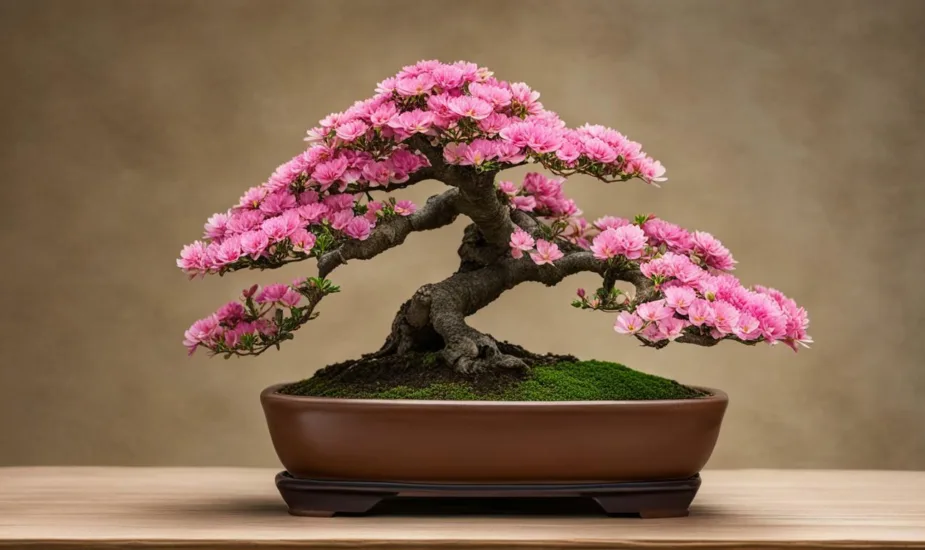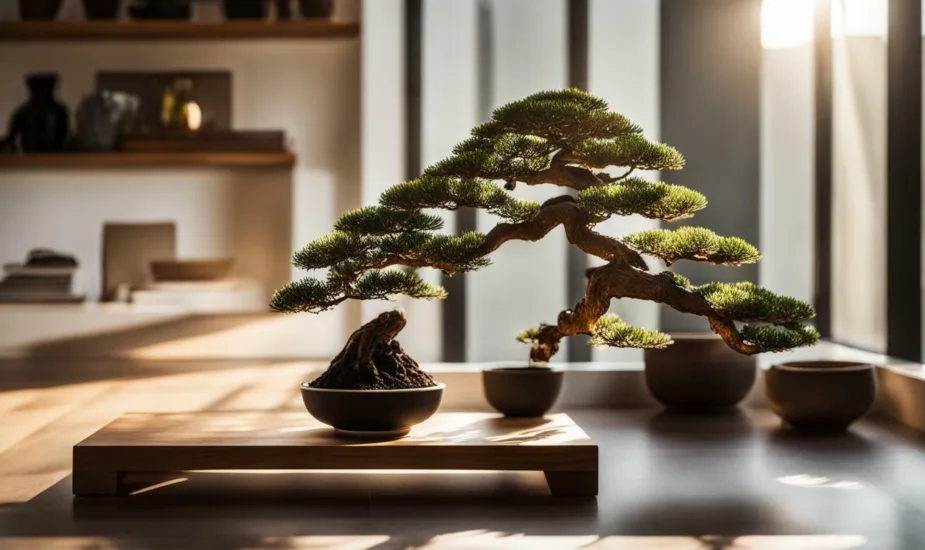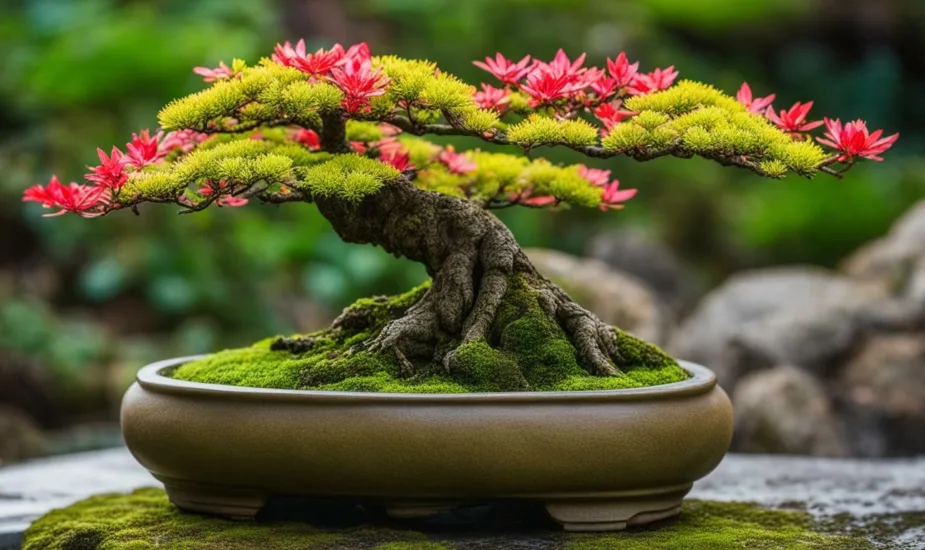Why Does My Bonsai Tree Have Black Spots? Understanding Causes
Bonsai trees can sometimes develop black spots on their leaves, which can be a cause for concern among bonsai enthusiasts. These black spots can indicate various issues affecting the health of your bonsai tree. Understanding the causes behind these black spots is crucial in addressing the problem and ensuring the overall well-being of your beloved bonsai.
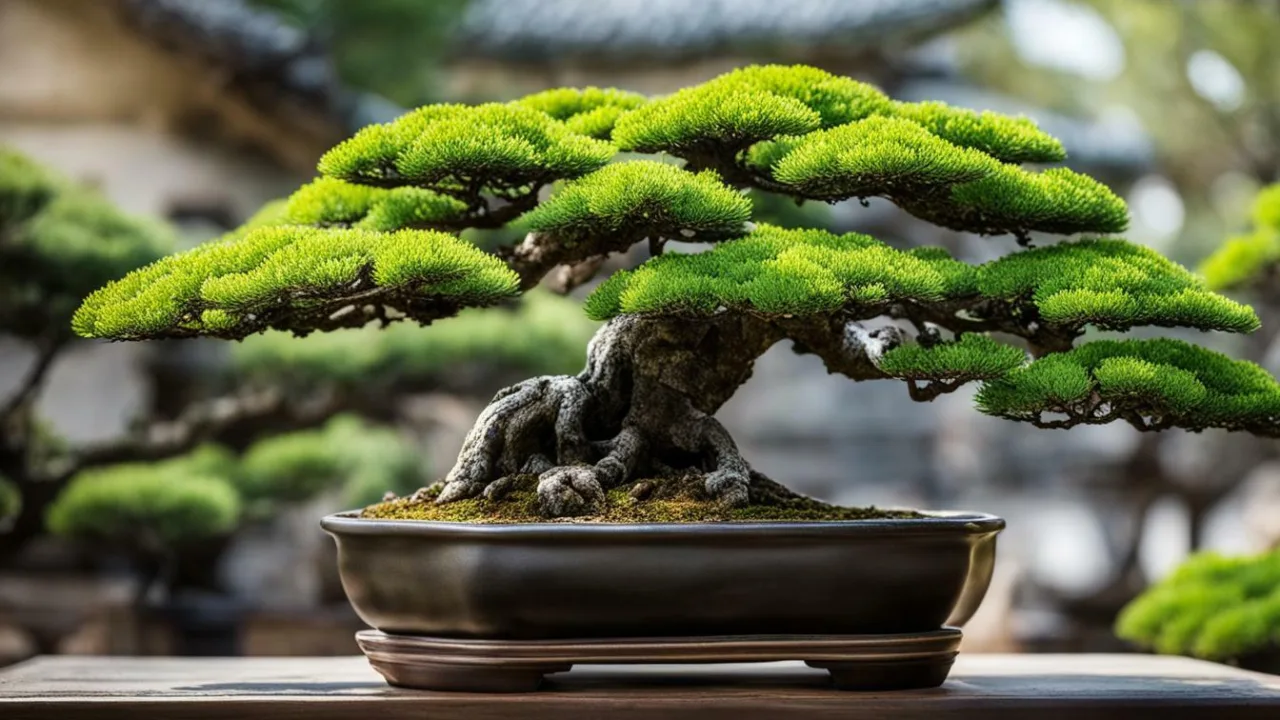
One common cause of black spots on bonsai leaves is a fungal disease called black spot. These small dark spots can appear on the leaves and can spread if not treated promptly. To combat black spot, spraying the foliage with a suitable fungicide is recommended.
Age-related leaf discoloration is another potential cause. As bonsai trees age, old leaves may develop small spots and eventually drop off, while new leaves remain unaffected. This is a natural process and not a cause for major concern.
Red spider mites can also contribute to black spots on bonsai leaves. These pests can cause black spots, along with pale mottling and webbing. Treating this issue requires consistent spraying with a plant invigorator twice a week.
Other factors that can lead to black spots include lack of air circulation, overwatering, underwatering, infectious fungi, insufficient light, nutrient deficiency, and leaf burn. These issues can be prevented and treated with proper care practices.
Regularly inspecting your bonsai trees for signs of disease, monitoring soil moisture, providing adequate lighting and ventilation, and using fungicides and fertilizers as needed are essential in preventing and treating black spots.
Remember, taking immediate action to address any issues and prevent the spread of infection is crucial in maintaining the health and beauty of your bonsai tree.
Black spots on bonsai tree leaves can be caused by a variety of factors, including fungal diseases, age-related issues, pests, and environmental conditions. One common culprit is a fungal disease called black spot, which manifests as small dark spots on the leaves. To address this issue, spraying the foliage with a fungicide can effectively treat the infection and prevent its spread. It is important to regularly inspect the bonsai tree for signs of black spots and take immediate action to avoid further damage.
Age-related leaf discoloration is another possible cause of black spots. As bonsai trees age, their leaves naturally develop small spots and gradually drop off, while new leaves appear unaffected. This is a normal process and does not indicate any major health issues. However, it is essential to differentiate between age-related spots and those caused by diseases or pests, as the treatment methods may vary.
Red spider mites are notorious pests that can contribute to the appearance of black spots on bonsai leaves. These tiny arachnids not only cause the spots but may also lead to pale mottling and the presence of webbing. To combat red spider mites, spraying the bonsai tree with a plant invigorator twice a week is recommended. This treatment will help control the mites and mitigate the formation of black spots on the leaves.
Other factors that can cause black spots on bonsai trees include:
- Lack of air circulation
- Overwatering or underwatering
- Infectious fungi
- Insufficient light
- Nutrient deficiency
- Leaf burn
To prevent and treat these issues, proper care and maintenance are crucial. Regularly check the soil moisture levels to ensure appropriate watering, provide adequate lighting and ventilation, and use fungicides and fertilizers as needed. By implementing these practices, bonsai enthusiasts can proactively address black spots and maintain the health and beauty of their bonsai trees for years to come.
| Cause | Treatment |
|---|---|
| Fungal diseases (black spot) | Use a fungicide spray on the foliage |
| Age-related leaf discoloration | No treatment necessary; it is a natural process |
| Red spider mites | Spray with a plant invigorator twice a week |
| Other factors (lack of air circulation, overwatering, etc.) | Proper care and maintenance, including adequate watering, lighting, and ventilation |
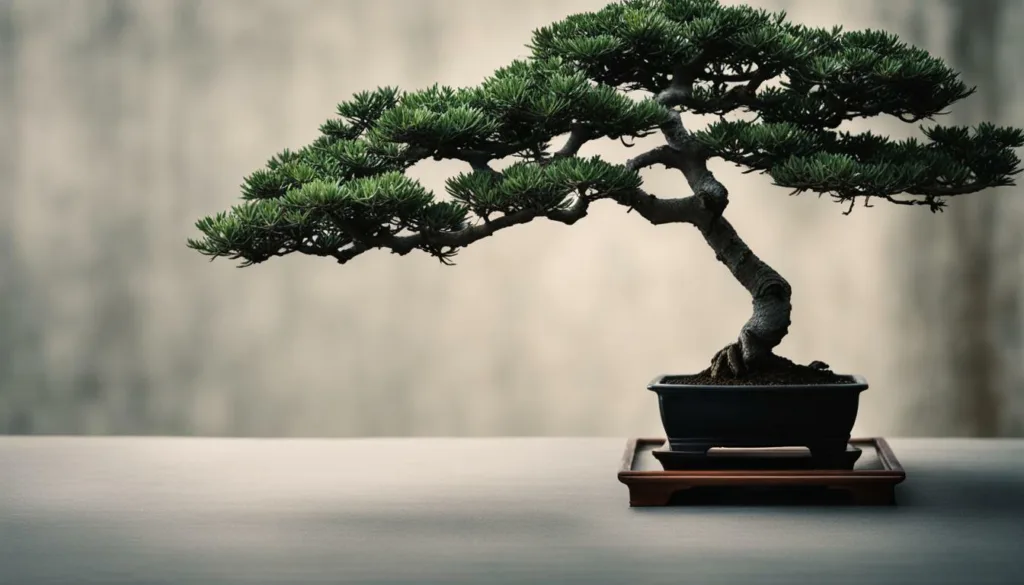
Regularly inspecting bonsai trees for signs of disease and taking immediate action is crucial to prevent the spread of infection. By addressing the causes of black spots and implementing proper care practices, bonsai enthusiasts can ensure the longevity and vitality of their beloved trees.
Treating Black Spots on Bonsai Trees
Treating black spots on bonsai trees requires a combination of effective techniques to eliminate the underlying causes and restore the health of the plant. One common cause of black spots is a fungal disease called black spot, which manifests as small dark spots on the leaves. To tackle this issue, spraying the foliage with a fungicide specifically designed for bonsai trees is recommended. This helps to control the spread of the infection and promote healthier foliage.
Another culprit for black spots on bonsai leaves is red spider mites. These tiny pests not only cause black spots but also result in pale mottling and the presence of webbing. To combat red spider mites, spraying the leaves with a plant invigorator twice a week is an effective solution. The plant invigorator helps to control the population of the mites and restore the leaf’s natural color.
In addition to fungal diseases and pests, black spots can also be caused by environmental factors such as lack of air circulation, overwatering, underwatering, insufficient light, nutrient deficiency, and leaf burn. To prevent these issues, it is crucial to practice proper care for your bonsai trees. Check the soil moisture regularly, ensuring it is neither too dry nor too waterlogged. Provide adequate lighting and ventilation to promote healthy growth, and supplement the tree’s nutrient needs with appropriate fertilizers.
| Causes of Black Spots on Bonsai Trees | Treatments |
|---|---|
| Fungal diseases (e.g., black spot) | Use a bonsai-specific fungicide to spray the foliage. |
| Red spider mites | Spray the leaves with a plant invigorator twice a week. |
| Lack of air circulation | Ensure the bonsai tree is placed in an area with adequate air movement. |
| Overwatering | Adjust the watering schedule to allow the soil to dry out between waterings. |
| Underwatering | Ensure the bonsai receives sufficient water to meet its needs. |
| Insufficient light | Place the bonsai tree in a location with appropriate lighting conditions. |
| Nutrient deficiency | Supplement the bonsai’s nutrient requirements with suitable fertilizers. |
| Leaf burn | Protect the bonsai from extreme temperature fluctuations and direct sunlight. |
Regular inspection of bonsai trees is essential to detect signs of disease early on. By taking immediate action to address black spots and other issues, you can prevent the spread of infection and keep your bonsai trees thriving. Remember, treating black spots on bonsai trees requires a comprehensive approach that addresses both the symptoms and the underlying causes.
Conclusion
Taking proper care of your bonsai tree is essential to prevent black spots and other common problems, ensuring that your miniature plant thrives for years to come. Bonsai trees can develop black spots on their leaves due to various reasons, including fungal diseases, age-related leaf discoloration, and pests like red spider mites. In order to treat and prevent these issues, it is important to implement proper care practices and regularly inspect your bonsai tree.
One common cause of black spots on bonsai leaves is a fungal disease called black spot, which manifests as small dark spots on the leaves. To treat this, you can spray the foliage with a fungicide. Another cause could be age, as old leaves often develop small spots and drop off, while new leaves remain unaffected. Red spider mites can also cause black spots on leaves, along with pale mottling and webbing. To treat this, it is recommended to spray with a plant invigorator twice a week.
It is important to note that lack of air circulation, overwatering, underwatering, infectious fungi, insufficient light, nutrient deficiency, and leaf burn can also contribute to the development of black spots on bonsai trees. To prevent and treat these issues, you should check the soil moisture regularly, provide adequate lighting and ventilation, and use fungicides and fertilizers as necessary. By doing so, you can help maintain the health and beauty of your bonsai tree.
Regular inspection is key in identifying any signs of disease early on and taking immediate action to prevent the spread of infection. By being proactive in caring for your bonsai tree, you can ensure its longevity and enjoy its elegance for years to come.
FAQ
Why does my bonsai tree have black spots?
Bonsai trees can develop black spots on their leaves due to various reasons. One common cause is a fungal disease called black spot, which appears as small dark spots on the leaves. Other causes can include age-related leaf discoloration, red spider mites, lack of air circulation, overwatering, underwatering, infectious fungi, insufficient light, nutrient deficiency, and leaf burn.
How can I treat black spots on my bonsai tree?
Treatment for black spots on bonsai trees depends on the underlying cause. For fungal diseases like black spot, spraying the foliage with a fungicide can help. If red spider mites are the culprit, spraying with a plant invigorator twice a week is recommended. Additionally, ensuring proper care practices such as providing adequate air circulation, checking soil moisture, maintaining sufficient lighting, and using fungicides and fertilizers can help prevent and treat black spots.
What should I do if I notice black spots on my bonsai tree?
It is important to regularly inspect bonsai trees for signs of disease, including black spots on leaves. If you notice black spots, take immediate action to prevent the spread of infection. Identify the underlying cause, such as fungal disease or pests, and apply the appropriate treatment. Implement proper care practices to ensure the overall health of your bonsai tree.
How can I prevent black spots on my bonsai tree?
To prevent black spots on bonsai trees, it is important to maintain proper care practices. This includes providing adequate air circulation, checking soil moisture levels regularly, ensuring sufficient lighting, and providing appropriate nutrition through fertilization. Regularly inspecting your bonsai tree for signs of disease and taking immediate action can also help prevent the development of black spots.
 Little Garden Tips
Little Garden Tips




